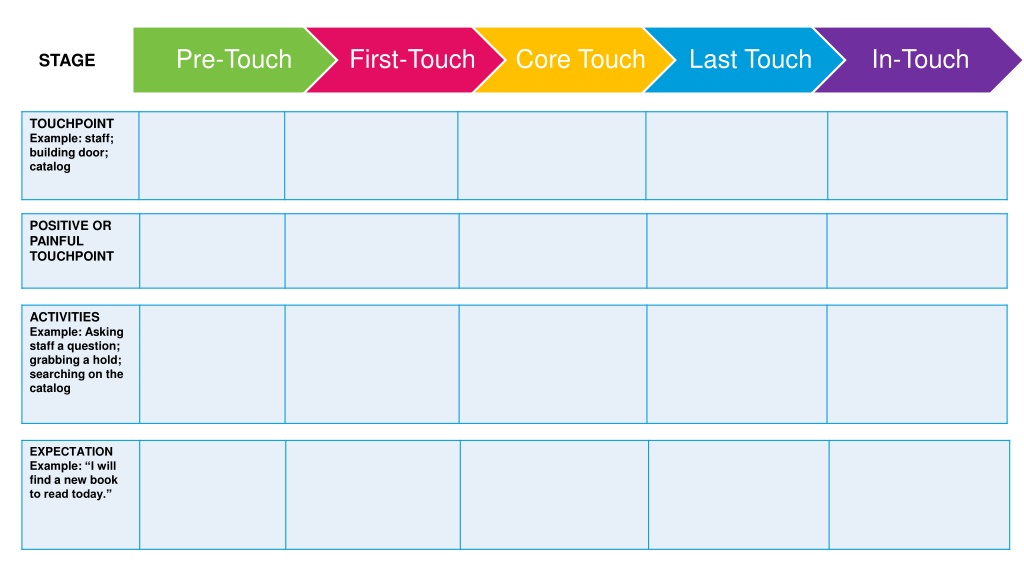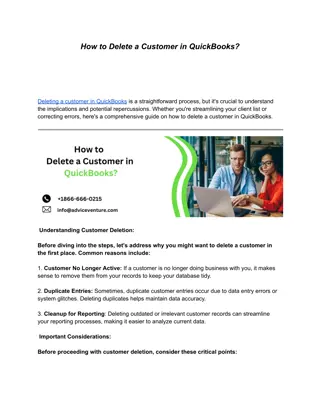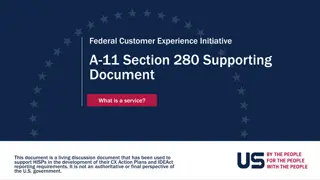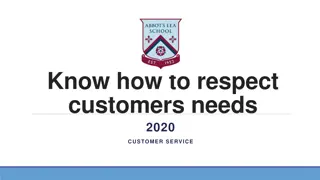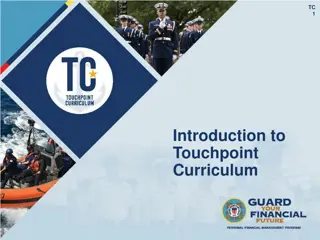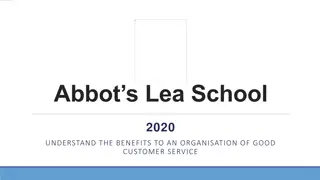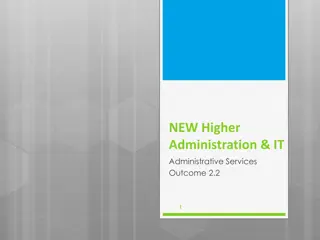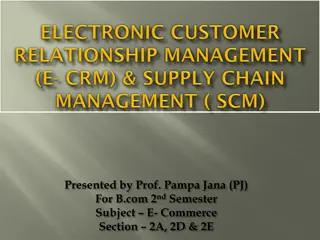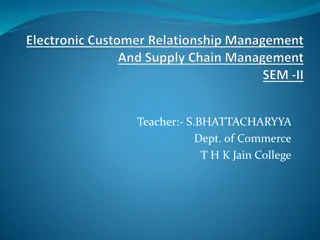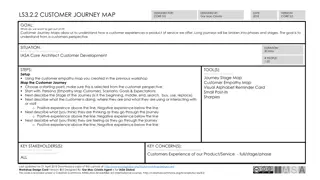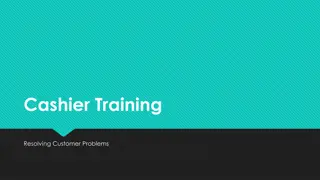Enhancing Customer Experience Through Touchpoint Optimization
Explore strategies to improve customer journey experiences by focusing on touchpoints. Learn how to create delightful interactions, identify pain points, and build service blueprints for a seamless customer experience. Utilize customer data to map journey steps and emotional responses, ultimately enhancing customer satisfaction.
Download Presentation

Please find below an Image/Link to download the presentation.
The content on the website is provided AS IS for your information and personal use only. It may not be sold, licensed, or shared on other websites without obtaining consent from the author. Download presentation by click this link. If you encounter any issues during the download, it is possible that the publisher has removed the file from their server.
E N D
Presentation Transcript
Pre-Touch First-Touch Core Touch Last Touch In-Touch STAGE TOUCHPOINT Example: staff; building door; catalog POSITIVE OR PAINFUL TOUCHPOINT ACTIVITIES Example: Asking staff a question; grabbing a hold; searching on the catalog EXPECTATION Example: I will find a new book to read today.
Focus-group design sprint Goal: To create the fewest solutions for the most problems __________________________________________________ Questions to start brainstorming: 1. What would this experience look like if every touchpoint was delightful? 2. What needs to change for this to happen? 3. What supports would you need as staff for this to happen? 2
Five Steps to Customer Journey Map Collect Customer Data Build Journey Map Identify Painful Touchpoints Define Goal and Scope Code Data What do you hope to learn from the project? What will you focus on? Identify journey steps and touch points Aggregate data Include steps of the journey; touchpoints; and expectations Recruit Observe Interview Explore further to improve CX 3
Five Steps to Service Blueprint Brainstorm and Evaluate Solutions Define Goal and Scope Conduct Staff Research Analyze Staff Data Create Blueprint Evaluate potential solutions Logistical Constraints Identify staff actions; internal support; and external support What do you hope to learn from the project? What will you focus on? Recruit Focus Groups Interview Aggregate data and build blueprint 4
First Touch Core Touch Pre-Touch Last Touch In-Touch FEELING DELIGHTFUL SATISFYING NEUTRAL PAINFUL CHANNELS DOING & SAYING THINKING
Customer Journey Map Components The steps on the journey: o Pre-Touch: Interactions that happen before explicitly starting the journey with the library. o First Touch: First interactions that participants have with the library. o Core Touch: Interactions that take place throughout the journey. o Last Touch: The final interactions with the library before the end of their journey. o In-Touch: Interactions that take place after the journey has ended. The emotional response (what the customer is feeling) to the touchpoint: o DELIGHTFUL: This touchpoint surprises, delights, and makes a customer s day. These go above and beyond a customer s expectations. o SATISFYING: This touchpoint meets a customer s expectation and satisfies their desires or needs. o NEUTRAL: This touchpoint is neither good nor bad for the customer. o PAINFUL: The customer s expectations are not met. Channels:Visualize which different channels customers use or come across at each stage. Doing & Saying:A description of what customers are doing or quotes from customers that sum-up their experience on each stage. Thinking:What a customer is expecting from this stage of the experience 2024-09-26 6
Template Service Blueprint CUSTOMER PAIN POINTS EPL EMPLOYEE ACTIONS (FRONTSTAGE) INTERNAL SUPPORT & INFLUENCES (BACKSTAGE & SUPPORT) EXTERNAL INFLUENCES (SUPPORT) IDEAS & QUESTIONS TO EXPLORE FURTHER
Service Blueprint Components Customer Pain Points o The pain points from a specific CJM consolidated into a manageable number of pain points. Employee Actions (Front Stage): o Consists of the employee actions that the customers can observe directly and that contribute to the pain point. Internal Support and Influences (Back Stage): o Consists of the EPL specific practices, procedures, projects, and workflows that influence the employee actions and contribute to the pain point. External Influences (Outside the Organization): o Consists of external influences that contribute to the pain point. Many of the external influences are not conditions that a public library has control over such as BiblioCommons control of the catalog interface and customer expectations related website content. Ideas and Questions to Explore Further: o Consolidate ideas and questions presented in the focus groups and meetings related to addressing painful touchpoints. Use these comments as a starting point to explore potential recommendations. 2024-09-26 8
